It is only very recently that we have begun to realize that the diversity of species of paradise fish (Macropodus) is much greater than we thought possible. Basically, three main groups can be distinguished in this genus, whose representatives are at home in China, Vietnam and Korea: Round-tailed paradise fish (M. ocellatus and related species), Red Fork-tailed paradise fish (M. opercularis and related species) and Black Fork-tailed paradise fish (M. spechti and related species). Of these, the round-tailed paradise fish occur furthest north, where fork-tails can no longer exist. The red and black forktails, on the other hand, occur in areas that are geographically close together. They are ecologically distinct: red fork-tails have their ecological optimum in standing, marshy waters, while black fork-tails prefer flowing waters. For this reason, red and black fork-tails are hardly ever found in the same habitat in nature and cross-breeding does not occur in nature either – at least no hybrids have ever been found.
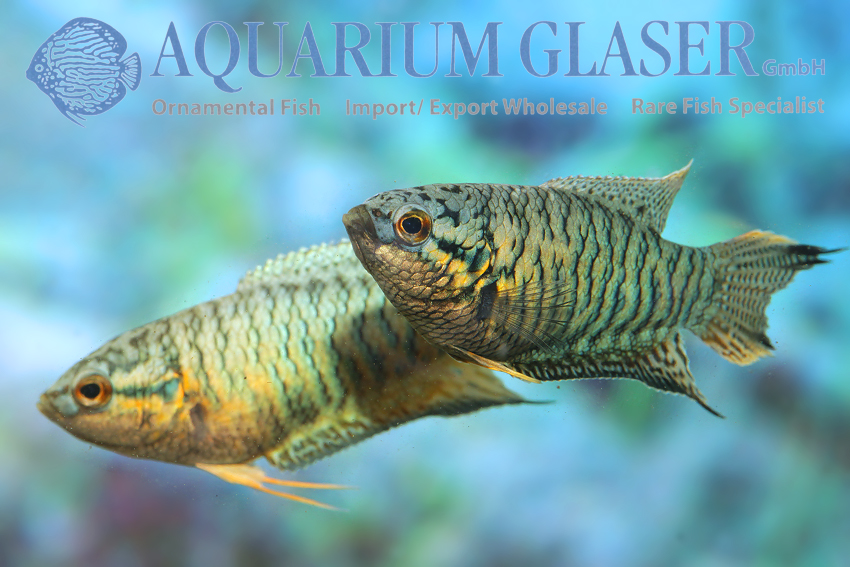
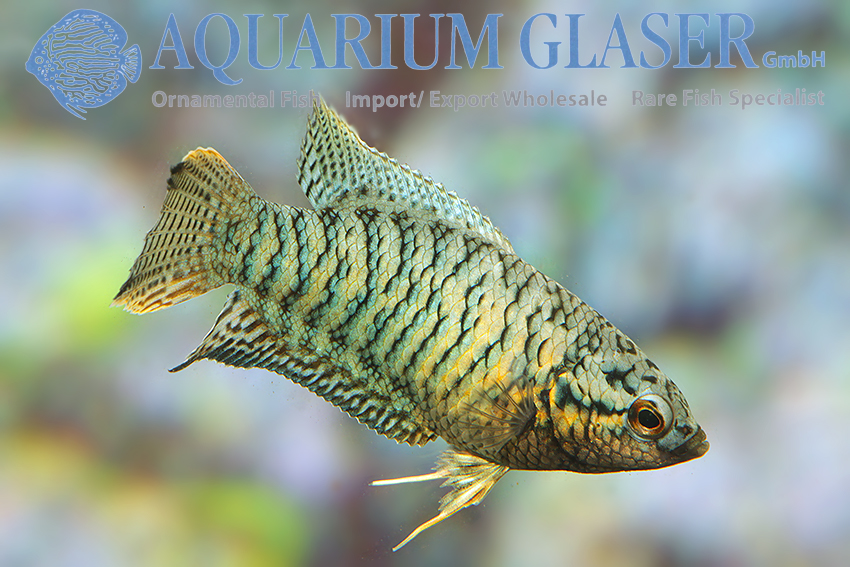
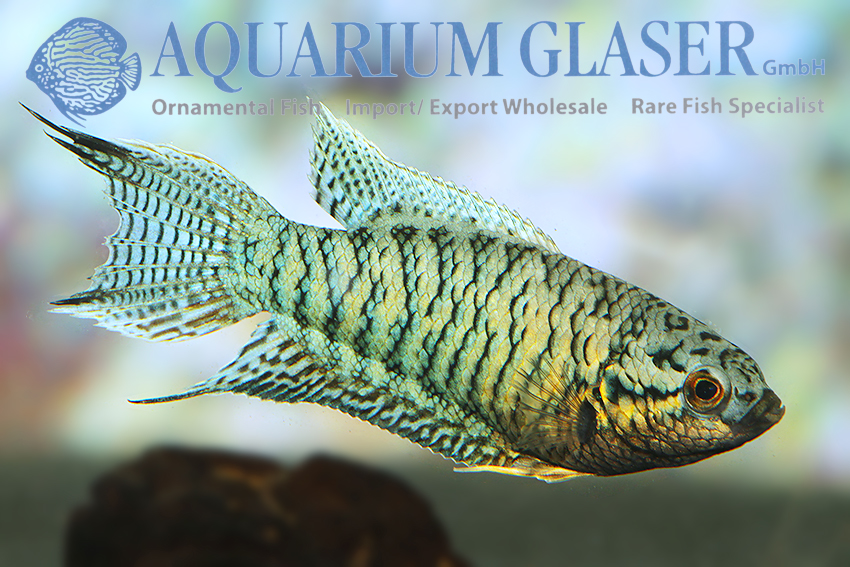
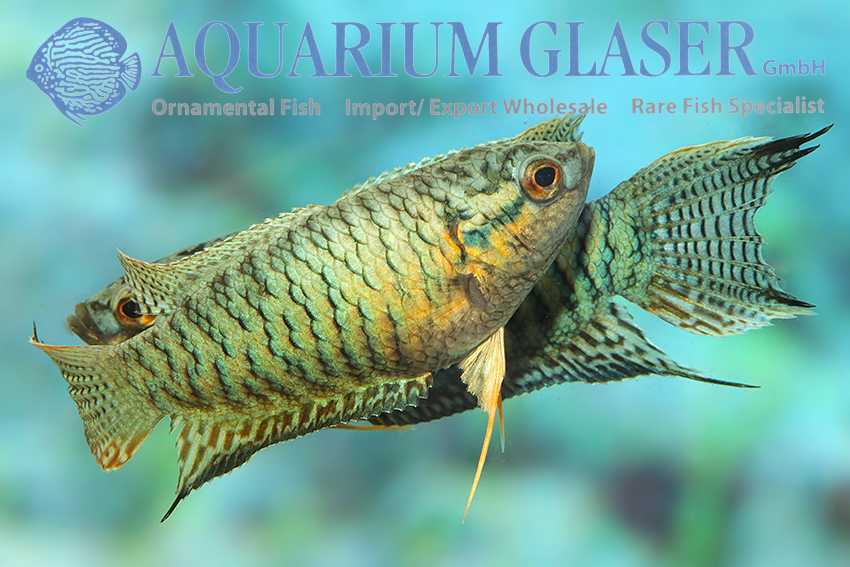
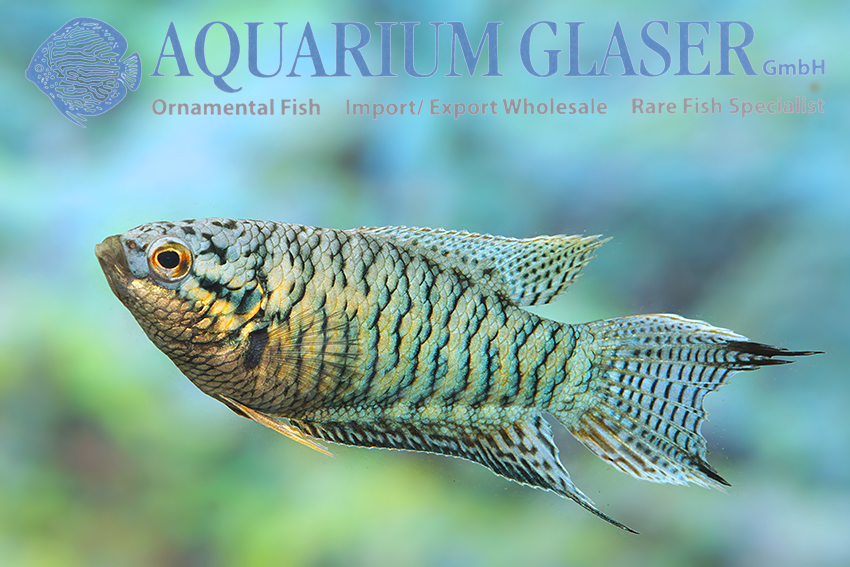
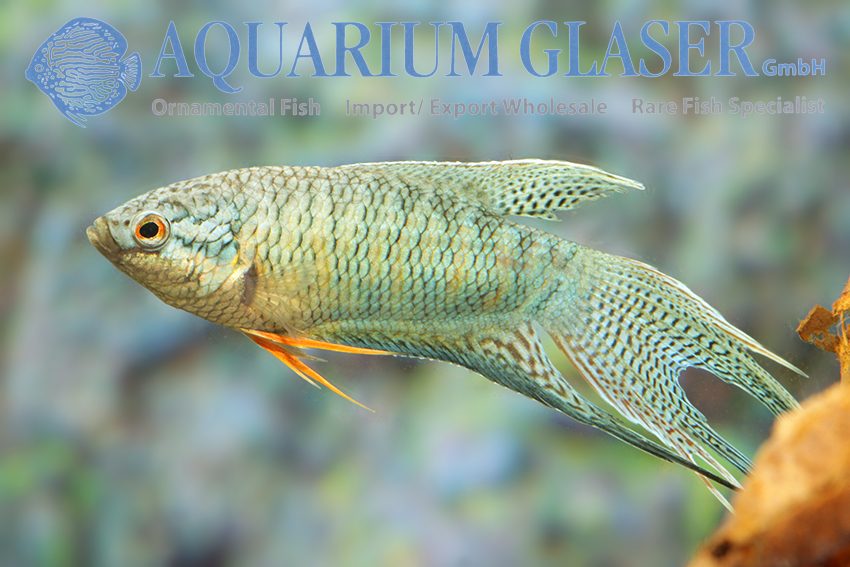
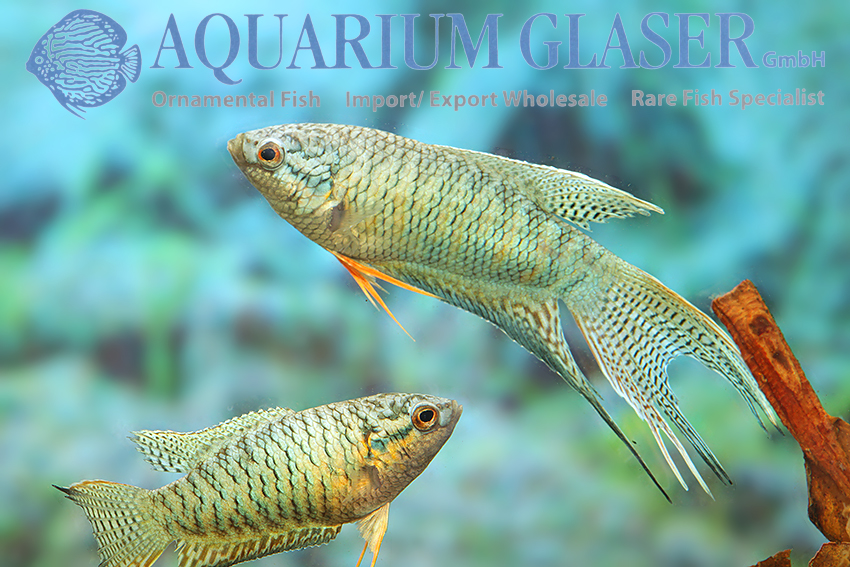
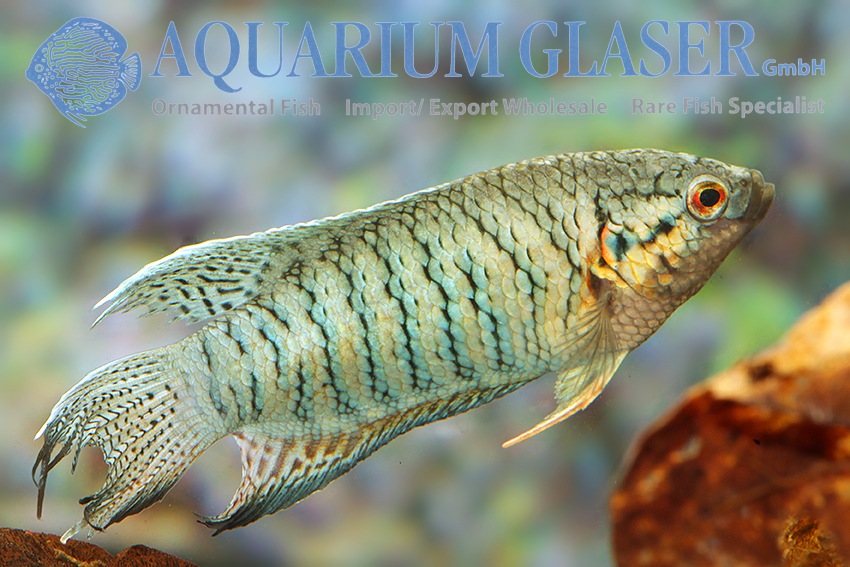
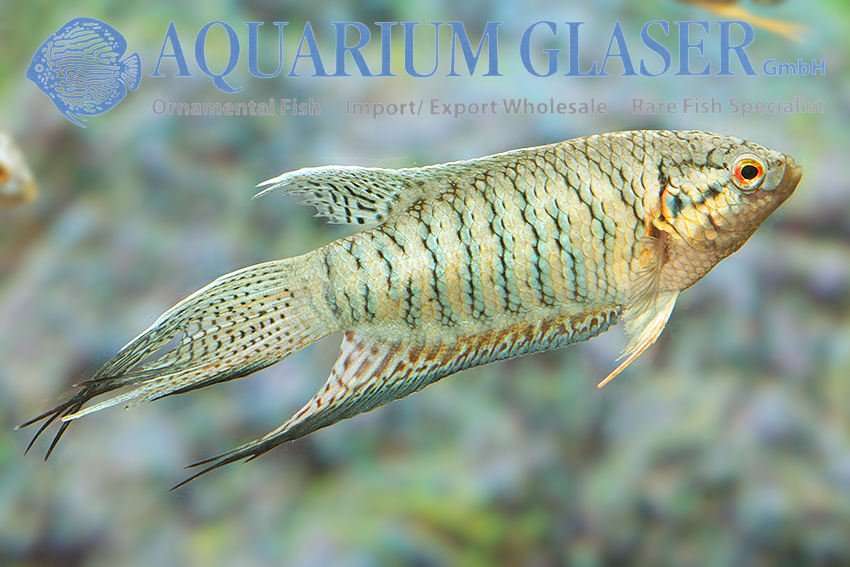
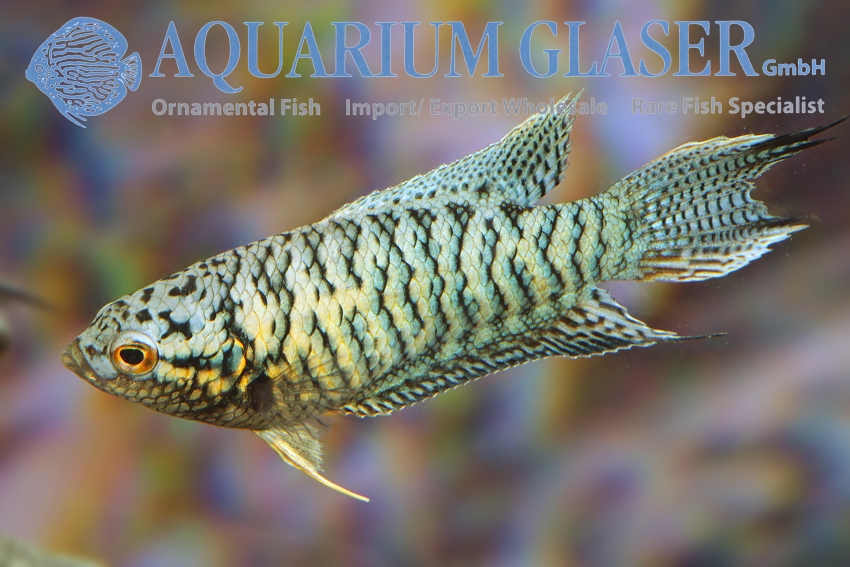
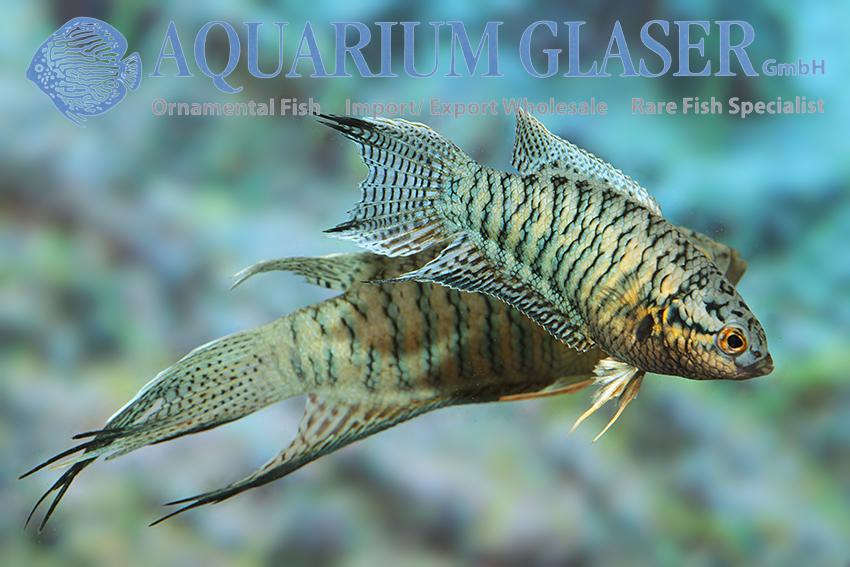
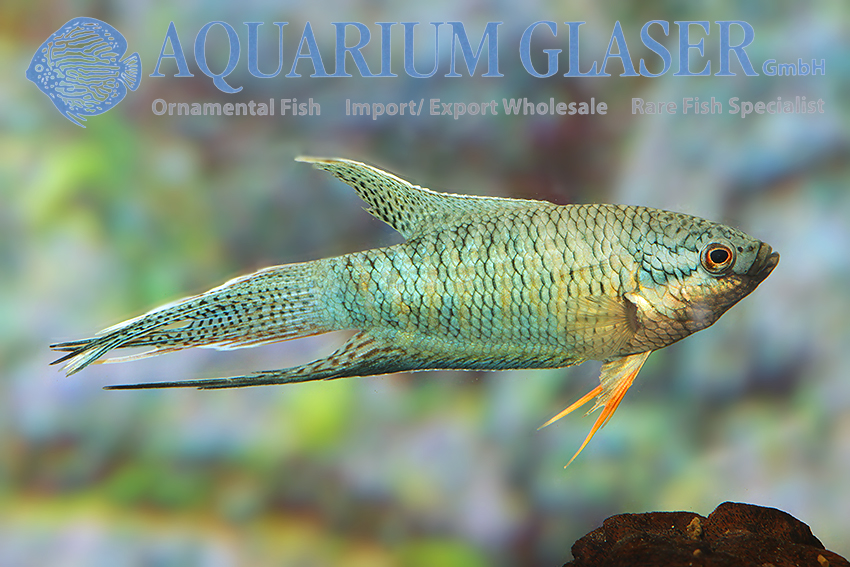
In the aquarium, however, all paradise fish can be crossed with each other. The hybrids often look very attractive. However, none of the hybrids have been able to establish themselves in the hobby in the long term. They have always disappeared again after a short time. We can currently offer a new, very attractive hybrid, the “Blue Tiger”. The breeder describes the development as follows: “As the Royal Blue were no longer colorful enough for me, I created hybrids from the Royal Blue and Snake Skin paradise fish, which I then mated and was able to select a few very beautifully blue-striped animals (approx. 10 out of 200) in the F2. I now have a new generation swimming from these few animals. The animals stand out due to their beautiful, uniformly intense blue with dark blue stripes. The blue is more opaque than my Royal blue.”
Both “Royal Blue” (see https://www.aquariumglaser.de/en/fisharchive/macropodus-spechti-royal-blue-4/) and “Snakeskin” are representatives of the black forktails. Formally, they are currently assigned to Macropodus spechti, but it is still unclear whether they are not descendants of animals that also have a coloration that is constantly different from M. spechti in nature.
„Blue Tiger” is particularly attractive due to the fact that the females are just as colorful, often even more colorful than the males.
For our customers: Macropodus “Blue Tiger” has code 425813 on our stocklist. Please note that we only supply the wholesale trade.
Text & Photos: Frank Schäfer




